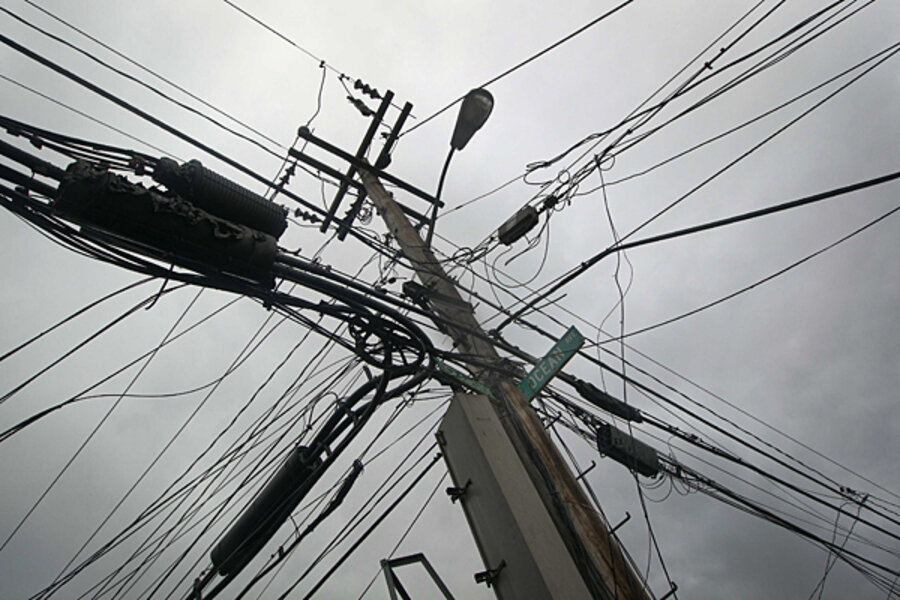Will hurricane Sandy raise your utility bill?
Loading...
Hurricane Sandy may cost the US economy anywhere from $30 billion to $50 billion, according to preliminary assessments. A big portion of that bill will be paid by utilities as they scramble to repair downed lines and restore power to millions of customers.
And that means higher utility bills down the road for those customers, if previous hurricanes are any indication.
Utilities say they won't know the exact numbers for weeks, but Allan Drury, a spokesman for New York-based Consolidated Edison, expects the cost to utilities to be high. "[T]he empirical evidence would point to it being very expensive, because so many customers are out of service."
As of 1:30 pm Tuesday, about 860,000 Consolidated Edison customers were without power, Mr. Drury said in a telephone interview, more than four times the number of homes and businesses who lost power during last summer's hurricane Irene.
Between the added labor needed to restore power and the complicated repairs to damaged infrastructure, costs will add up quickly.
"We have outside contractor crews – and bills that will have to come in – that all becomes a part of the cost of storm restoration," David Graves, a spokesperson for National Grid, said in a voice message. "It’s going to be some time before we have all the accounting in place."
The British-based utility serves Massachusetts, Rhode Island, and New York in the United States.
So who pays for all the overtime labor, downed wires, and blown transformers?
Ratepayers typically cover the costs associated with storms, Drury said, but the effect isn't always direct. "We don’t say, 'Here’s a storm, we now have to charge more.' "
Con Ed's utility rates are set on a one- or three-year basis by the New York State Public Service Commission. A spokesperson for New York's Public Service Commission did not return a call for comment Tuesday afternoon.
If hurricane Sandy is anything like hurricane Irene, customers in the areas hardest hit may see a jump in utility rates.
In southern Vermont, for example, where Irene did its most damage, Central Vermont Public Service Corp. customers who use an average of 600 kilowatt-hours a month are to pay a $2.23 monthly surcharge over four years to recoup the hurricane costs.
Public Service of New Hampshire customers will pay 12 cents a month over four years for the utility to recover $7.1 million in Irene damages.
Last week, Atlantic City Electric announced it received permission from the New Jersey Board of Public Utilities to increase rates increase by $3.44 or 1.9 percent for a typical residential customer. The company attributes the hike to the rising cost of infrastructure maintenance and restoration costs associated with hurricane Irene.
– Material from the Associated Press was used in this report.







